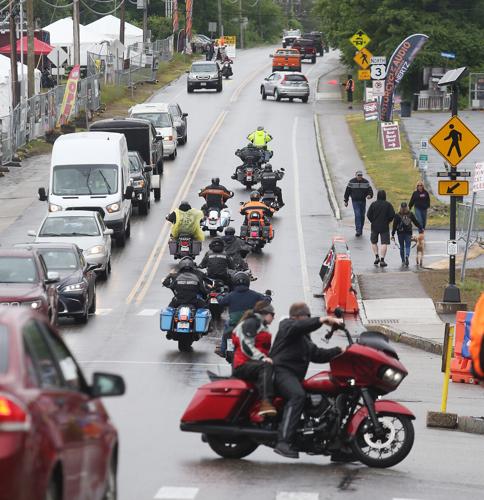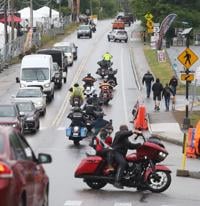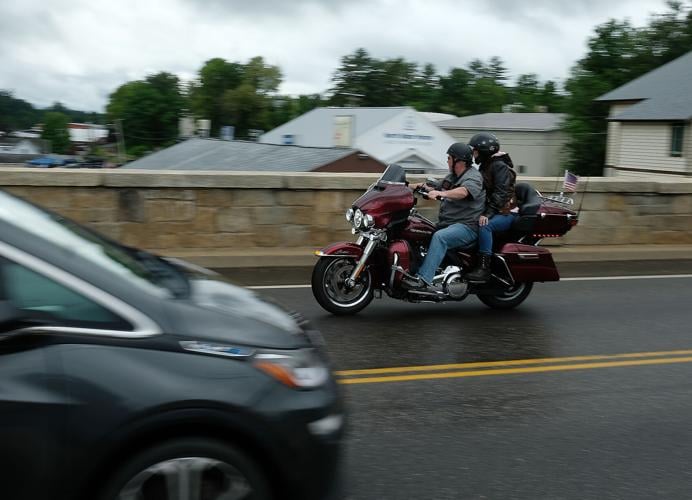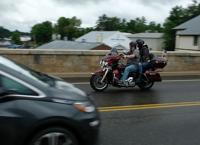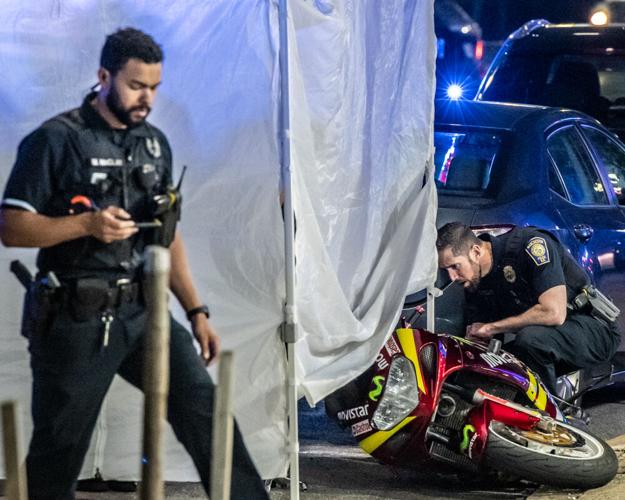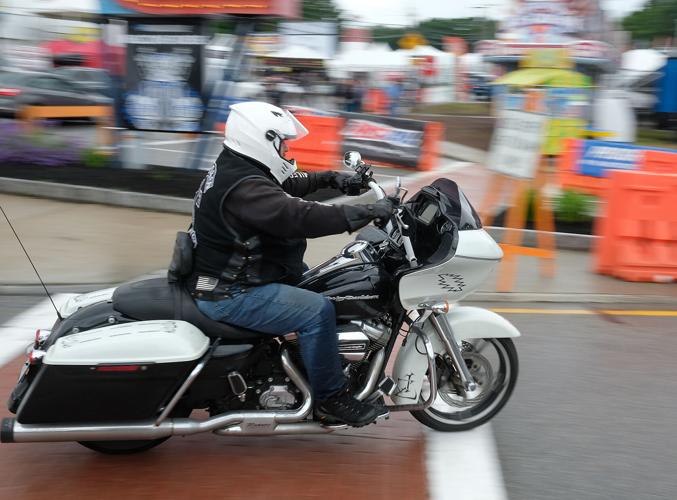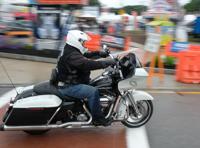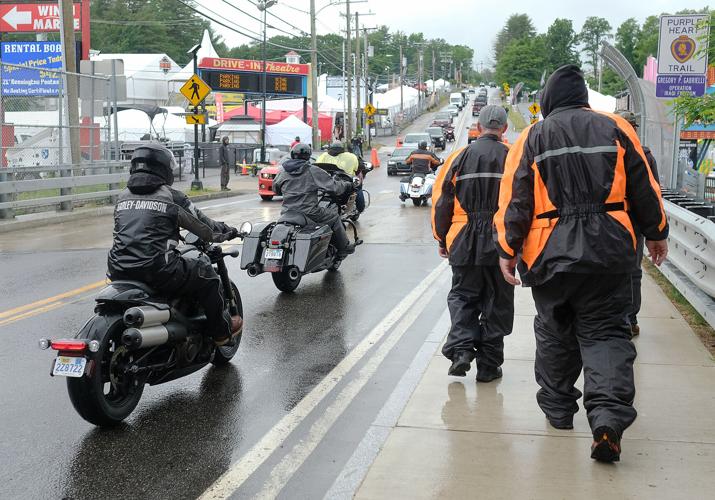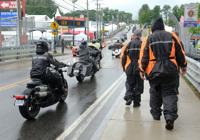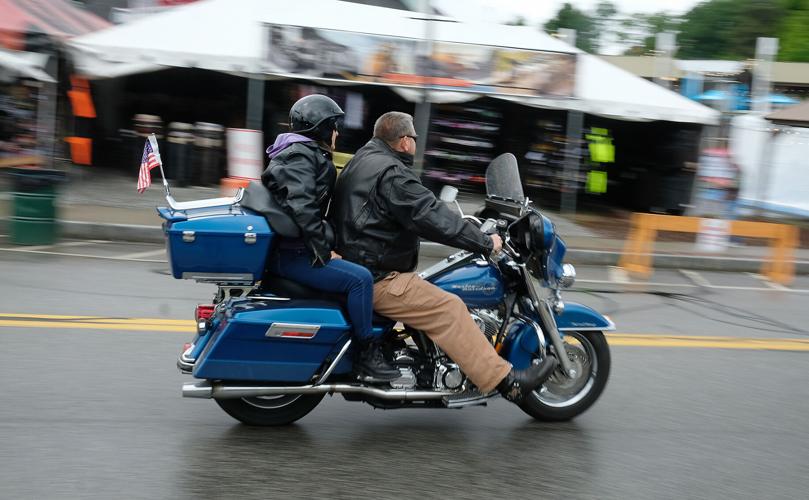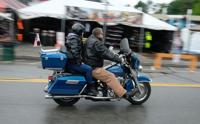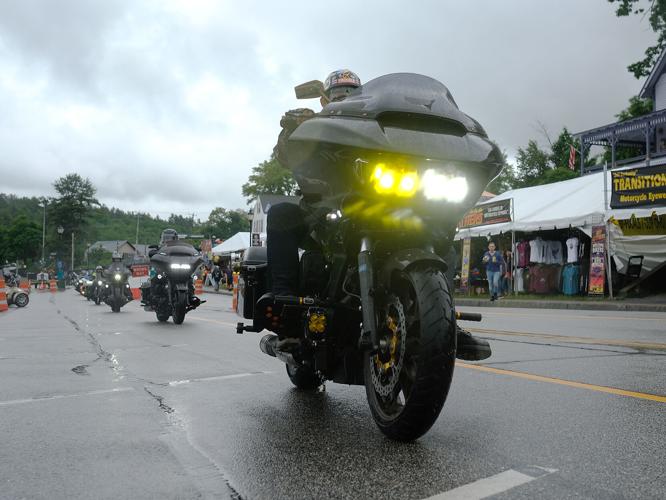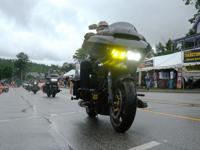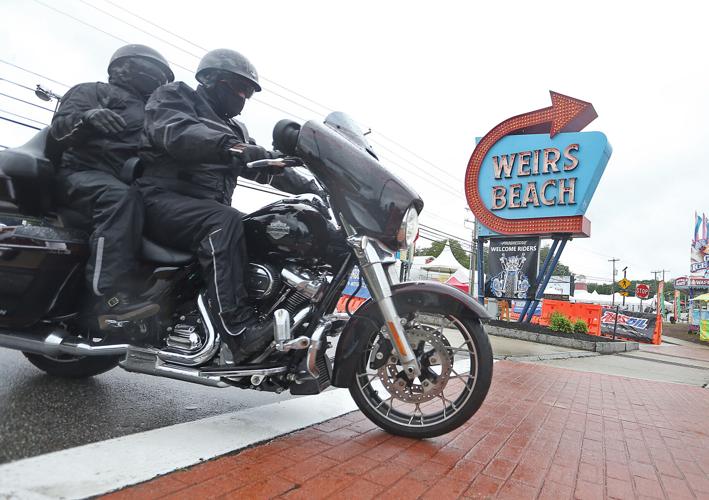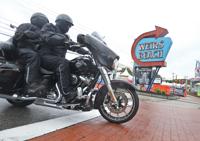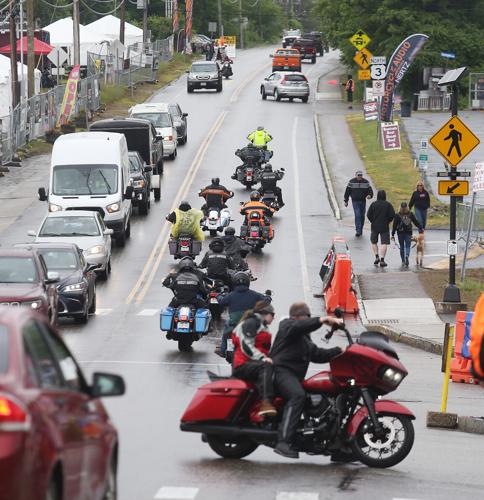Motorcyclists already are on pace for one of the deadliest years for crashes in New Hampshire.
So far, at least nine riders have died, ahead of this point in 2023, which ended with 41 deaths across the state. With Laconia Motorcycle Week having kicked off Saturday, there’s even more urgency for drivers and riders to be vigilant, officials said.
“This start to 2024 should be seen as a warning for all roadways users to commit to making safety the top priority,” said Larry Crowe, state coordinator of the New Hampshire Motorcycle Rider Education Program.
Just last week, a Massachusetts man died in a Seabrook crash. Since mid-May, two people from Dunbarton were killed in a Manchester crash, a Newmarket man died in Candia, and a Merrimack man was killed in Manchester. Additionally, a woman suffered serious injuries in Haverhill, a man was critically injured in Nashua, and a motorcyclist was seriously injured in a Londonderry crash.
The most common places for motorcycle crashes are curves and intersections. Car drivers and motorcyclists share the responsibility for seeing each other and allowing more time to stop and pass through, Crowe said.
To safely share the road with bikers, Crowe said, drivers should:
• Slow down.
• Think about motorcycles.
• Limit distractions.
• Allow more room for turns and stops.
• Use turn signals and don’t make U-turns.
Speeding hurts drivers’ abilities to make good decisions when reacting to changes around them.
Drivers must change their mindset, Crowe said. When calendar pages turn to spring, drivers need to turn their attention to thinking about motorcycles from the time they get behind the wheel.
“Studies show that people tend to not see what they are not looking for,” he said. “Think motorcycles.”
That also means drivers’ attention should be focused on the road, not their phones or built-in gadgets. A multitude of multimedia and maps, surround sound stereos and nonstop notifications only dull the ability to see what’s going on. Children, passengers and newer car cabins that limit road noise also make it hard to hear bikes coming.
“Motorcycles can stop very quickly and slow down quickly with engine braking, which does not activate the brake light,” Crowe said.
Giving more room for turns and stops, always using turn signals and checking blind spots also are crucial. SUVs have bigger blind spots than in the past.
“Blind spots are much bigger in the larger vehicles out there. Particularly concerning is the A pillar, which is the roof support to the front left and front right of the driver. These can often completely block the view of a motorcycle at a four-way intersection,” Crowe said.
Motorcyclists, for their part, should:
• Slow down.
• Wear a helmet.
• Anticipate sudden moves by cars.
• Position themselves defensively in lanes.
• Not outride their abilities.
• Keep their bikes well-maintained.
On the lookout
Excessive speed is a top concern for motorcycles, as is protecting your body, especially your head. Most fatalities involve riders without helmets.
You don’t have to wear full leathers in scorching summer heat, but a head injury can be catastrophic.
“If you get hurt in a T-shirt, you’re getting road rash,” said Matty Laughlin, the managing partner of Manchester Harley-Davidson. “Hitting your head on the ground — that’s deadly.”
Every rider should practice evasive maneuvers and anticipate erratic moves by cars, Crowe said. Preparing for what’s next also means positioning a motorcycle with enough room in front of it and to each side, knowing that cars don’t always see you.
“Vehicle sizes are a factor. Naturally, motorcycles can ‘hide’ from motorists in far more places than a small car,” Crowe said. “Riders need to choose lane positions to maximize their visibility to traffic. Wearing bright-colored clothing will also help motorists see them.”
Motorcyclists should understand their ability and experience levels, and know what their bikes can do, said Laughlin, who has been in three or four minor scrapes over his 25-plus years of riding.
“I see a lot of newer riders outriding the machine or outriding their abilities,” he said.
Every motorcycle must be well-maintained. That starts with brakes and tires. Car drivers don’t have to check their brake fluid as often as motorcyclists, and having two fewer wheels means traction is that much more important.
The Department of Motor Vehicles offers training courses for experienced riders through the Motorcycle Rider Training Program during the season and encourages all riders to participate, not just novices, Crowe said.
“Life-saving maneuvers should be practiced on a regular basis so that when they are needed, they are hardwired into a motorcyclist’s response,” he said. “An experienced rider course is a good way to keep sharp and discover where their strong and weak areas are.”


